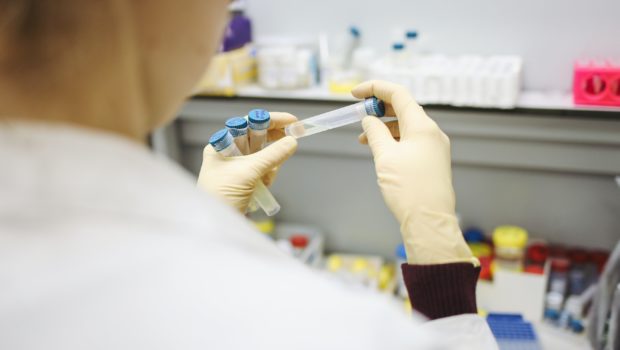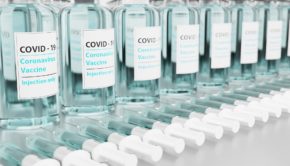5 Factors for a Successful Rollout of Covid-19 Vaccines
It could have taken years. Dire warnings pointed toward the possibility that it would never happen. Either way, early in the pandemic, infectious disease experts begged for measured expectations when it came to fervent longing for a vaccine to end the evolving nightmare of the COVID-19 pandemic.
Previous vaccine efforts took years to bear fruit. The far more deadly Spanish Flu of 1918 took three years to burn itself out. To beat this pandemic, we need proper testing for early detection and vaccines that are effective to produce antibodies. Flowflex is a rapid antigen test kit that gives results in 15 minutes and it very helpful in the diagnosis of COVID.
But against all the odds, doses of vaccines are being injected into the arms of UK residents as we speak, while Emergency Use Authorizations (EUA) of one vaccine and possibly soon a second will put doses on track for US arms.
The rollout will be imperfect—and, in fact, maddeningly slow as the winter surge takes thousands of lives. It will take months for vaccination capacity to produce herd immunity in major countries.
But that doesn’t take away from the monumental feat of science—at least three vaccines seem to have cleared the FDA’s threshold of 50% efficacy for EUA—some of them pushing as far as 90% or more, with 100% prevention of serious illness. Two more vaccine candidates are in Phase 3 clinical trials, with over 140 more in development.
The promising vaccine candidates come from a variety of major pharmaceutical companies, based in various countries and pursuing solutions based on a number of vaccine technologies—some tried and true, others groundbreaking and cutting edge. These technologies include:
- mRNA Vaccines. In development by Moderna, BioNTec/Pfizer, CureVac, and Imperial College London. A groundbreaking vaccine technology, the first of its kind approved for use in humans, these vaccines use messenger RNA to produce the “spike protein” used by SARS CoV-2 (“new coronavirus”) to attack cells. Exposure to the spike protein stimulates an immune response that makes the spike protein infected if encountered in the form of the coronavirus.
- Protein Subunit Vaccines. In development by Novavax, Sanofi and GlaxoSmithKline, SpyBiotech. This revolutionary vaccine technology uses the spike protein itself, or a portion of it, to produce an immune system response similar to that produced by an mRNA vaccine.
- Vector Vaccines. In development by AstraZeneca, Johnson & Johnson, CanSino Biologics, and the Gamaleya Research Institute. Vector vaccines are a tried-and-true vaccine technology that uses a different species of virus with portions of the new coronavirus encoded in its RNA sequence to create an immune response that will defend against the actual coronavirus.
- Whole Virus Vaccines. In development by Sinovac Biotech, Sinopharm, the Wuhan Institute of Biological Products, and Bharat Biotech. One of the oldest forms of vaccine technology, whole virus vaccines expose the body to a weakened or deactivated strain of SARS CoV-2 to teach the immune system to defend against it without the risk of illness.
With the end of the COVID-19 pandemic conceivably within reach, it behooves governments and companies to step up their game. Here are five requirements for a successful rollout of the COVID-19 vaccine inventory:
1. Expand Manufacturing Capacity
Governments and pharmaceutical manufacturers face significant challenges in the assembly of the supply-chain logistics needed for a global vaccination effort.
The ability to get these major corporations pulling their oars in the same direction is hampered by the fact that most private pharma companies offer no transparency into their supply chain process.
Additionally, pharma manufacturers may be reluctant to dedicate their facilities to the manufacturing efforts of a competitor, even in a time of public health crisis. Coordinating the global vaccine manufacturing effort will require diplomacy, coordination, compromise, and possibly sacrifice on the part of companies and entities not accustomed to compromising.
2. Expand Fill-Finish Capacity
Manufacturing the vaccine in bulk is actually less of a hurdle than the next stage of its journey—the “fill-finish” stage, wherein the vaccine is packaged into individual vials, bottles, and syringes.
This proved a major choke point in the distribution of the H1N1 vaccine, prompting the UK to invest in a fill-finish facility in 2018, which they will now rush to completion by summer of 2021.
The US has no such dedicated facilities under construction, so the challenge stateside will be to repurpose and retrofit existing facilities to perform the fill-finish role.
A team of scientists including Dr. Anthony Fauci and Dr. Francis S. Collins went on record to say “There is an immediate need to fund the necessary bio-manufacturing infrastructure, including the fill-finish steps that provide vialed vaccine products for distribution.”
3. Expand Cold-Chain Capacity
The challenges continue once the vaccine is manufactured and the vials filled. The first vaccines to win FDA EUA require refrigeration at every point of the supply chain. Failure to maintain this refrigerated supply chain, known as a “cold-chain,” could result in delivery of inert or spoiled vaccines.
The first vaccine out of the gate, developed by Pfizer and BioNTech, presents a special challenge. It must be kept at 70 degrees below freezing—colder than the average temperature in Antarctica.
Many smaller or remote hospitals and clinics don’t even have the deep-freeze equipment required to store such a vaccine for any period of time. As such, the first vaccine on the market may only be a viable option for larger, urban facilities that can store the vaccine at the proper temperature.
According to Dickson, a system of data loggers paired with continuous monitoring software is the industry standard for protecting temperature-sensitive products like vaccines.
4. Untangle Contracts
The rush to prepare for the vaccine rollout has led to a web of contracts, with various government and private entities tripping over themselves to arrange manufacturing and fill-finish deals. It’s hard to tell if these overlapping contracts will overtax the contractees.
For example, Emergent BioSolutions has contracts with the Department of Defense, Johnson & Johnson, and Norovax, representing a billion or more doses that Emergent may or may not have the capacity to produce as they scramble to up their capacities.
To fulfill their promises, governments and pharmaceutical companies need to get a realistic roster of contracts in order.
5. Keep Developing New Vaccine Candidates
As amazing as it is that effective vaccines have emerged before 2020 has ended, some of the technologies are untested long-term, and the rapid development process leaves questions about their long-term efficacy.
It may take multiple vaccines of different types to form the best immunization stack. In any case, the more vaccine candidates show promise, the faster the rollout and the faster the human population can achieve herd immunity.
In short, none of the 140 vaccine candidates should be shelved just because a few candidates got there first. The more effective vaccines we develop, the better chance we have of ending the COVID-19 reign of terror over humanity.
Conclusion
With COVID-19 vaccines in the pipeline, the end is finally in sight. Now governments and pharma companies must step up to usher in the most effective rollout possible—a rollout that has the potential to save lives, as well as restore trust in government, commerce, and science.
Photo by Polina Tankilevitch from Pexels
















